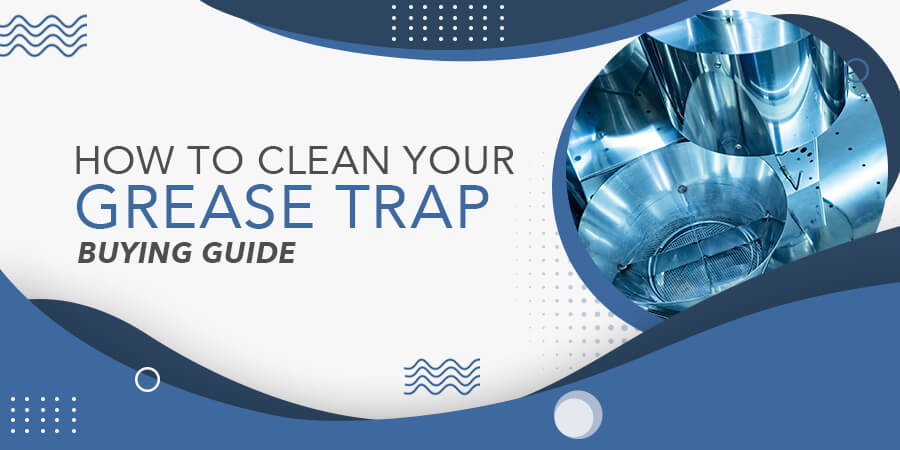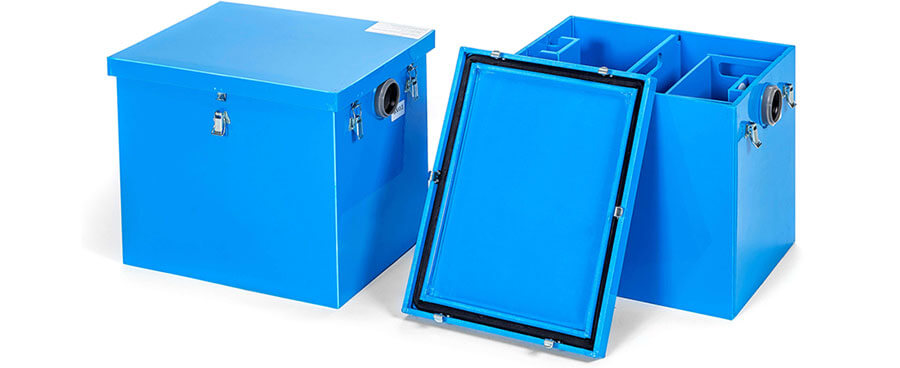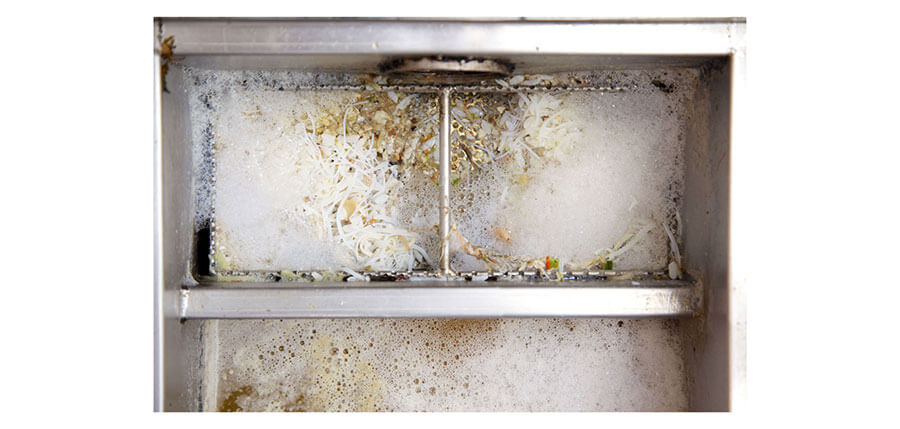How To Clean Your Grease Trap

A grease trap is an integral part of today’s commercial kitchens. Fried foods are popular across menus, venues, and price points. When your grease trap is properly cleaned and maintained, your restaurant smells clean, your food tastes delicious, and your customers are happy to return again and again. This tool also helps you save on plumbing costs and protect your local environment. Learn how to clean your restaurant grease trap to keep your kitchen running smoothly.
What Is A Grease Trap?

Commercial grease traps or grease interceptors are plumbing devices that keep fatty food products from entering your drains. Grease traps capture the fats, oils, and greases (also called FOG) that would otherwise go down the sewer.
Most modern kitchens produce FOG. Fried foods require constant oil usage, but grilled meat, buttery vegetables, and even salad dressings also introduce fats to your kitchen.
FOG poses several environmental risks, both to your immediate facility and the greater ecosystem. Fat, oil, and grease that’s poured down a standard drain can clog your pipes, cause unpleasant smells, and attract vermin. A properly functioning grease trap can save you hundreds or thousands of dollars on emergency plumbing and extermination services. Once it leaves your property, FOG can damage municipal sewage systems and harm local waterways, fish, and animals. Grease trap cleaning is an integral part of running a responsible, profitable kitchen.
Where Is Your Grease Trap?
Most grease traps are located outside your facility, on an exterior wall that’s close to your kitchen. Your grease trap is likely near your dishwashing station, so look for your grease trap cover on the ground nearest your dishwashing sink. The cover might look like a manhole, sewage cover, or septic tank cover.
Alternately, some grease traps are in a basement for protection from freezing temperatures.
Grease Trap Cleaning in Seven Easy Steps
- Remove Lid: Slowly and carefully remove your grease trap's lid. Take care not to damage the lid or any of its gaskets.
- Measure Grease Build-Up: Insert a ruler or measuring stick into the grease trap to see how many inches of grease the trap has captured. This process is similar to checking the oil in your car’s engine. Make sure to record how much grease you found in a FOG report as required by the EPA.
- Remove Water: Use a bucket or a small pump to remove any water from your grease trap. Save this water to return it to the trap later in the process.
- Remove Grease: Scoop out the grease from your trap with a bucket, shovel, or another heavy-duty scooping tool. Make sure to remove any excess grease from your trap’s bottom, sides, and lid. This helps prevent built-up grease from debris.
- Clean Everything: Scrub the top, sides, and bottom of your trap and clean the screens. GoFoodservice offers a wide range of powerful commercial drain cleaners to help you get your trap as clean as possible.
- Replace Water: Add the water you saved in step 3 back to your grease trap.
- Reassemble: Carefully reinstall all parts and refasten the lid.
When To Clean Your Grease Trap

Now that you know how to clean your restaurant grease trap, let’s explore when you should clean it. Start by checking your local regulations to see how much grease you are allowed to accumulate at one time. Many cities require you to keep less than 25% of your trap full at any time, but your municipality may be different. You may need to clean your trap once a quarter, once a month, or even once a week, depending on how much FOG your kitchen produces.
It's best to clean your trap when your kitchen isn't at work. Take a look at your business model to discover the best time for your routine. Some kitchens clean their traps after closing when the day’s dishes are all washed and the trap is as full as possible. Others find grease trap cleaning is a good task for the early morning before customers have arrived. Experiment to find the best schedule for your kitchen.
Explore Grease Traps and Drain Cleaners at GoFoodservice
Whether you’re looking for a new grease trap or simply want to maintain the trap you already have, GoFoodservice has a wide range of options. Explore our industry-leading grease traps and commercial drain cleaners to keep your kitchen working at top capacity.
Share This!